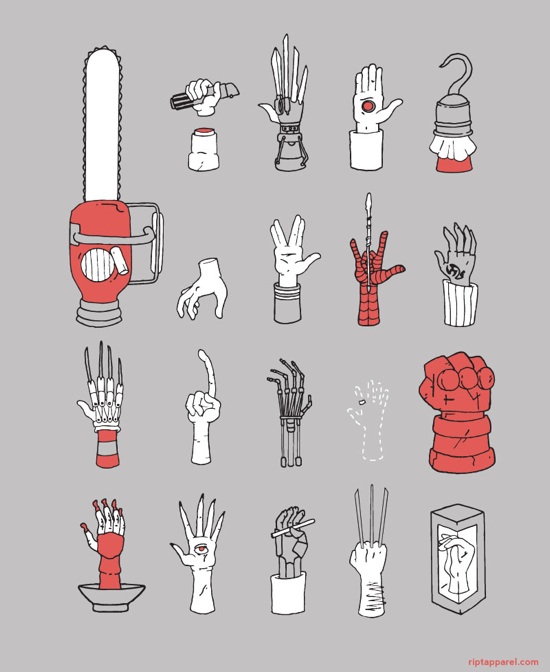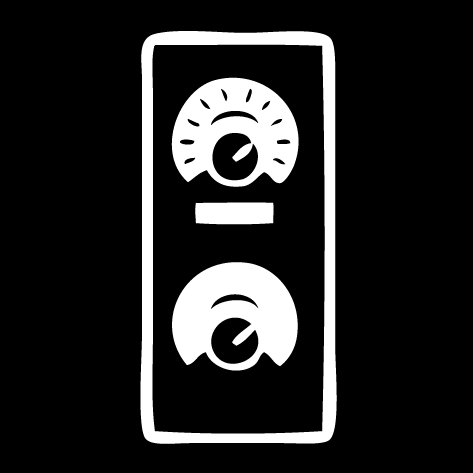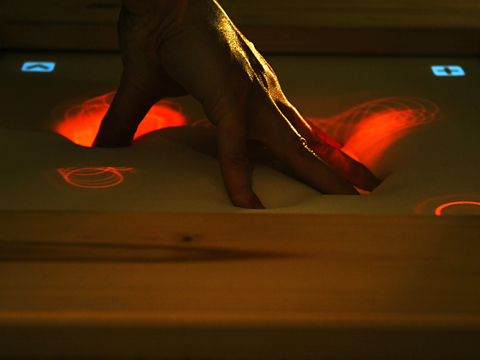music
Brilliant Italian scientists successfully recombine work and pleasure
On 25, Aug 2011 | No Comments | In music, neuroscience, perception | By Dave
A study provides evidence that talking into a person’s right ear can affect behavior more effectively than talking into the left.
One of the best known asymmetries in humans is the right ear dominance for listening to verbal stimuli, which is believed to reflect the brain’s left hemisphere superiority for processing verbal information.
I heavily prefer my left ear for phone calls. So much so that I have trouble understanding people on the phone when I use my right ear. Should I be concerned that my brain seems to be inverted?
Read on and it becomes clear that going beyond perceptual psychology, the scientists are terrifically shrewd:
Tommasi and Marzoli’s three studies specifically observed ear preference during social interactions in noisy night club environments. In the first study, 286 clubbers were observed while they were talking, with loud music in the background. In total, 72 percent of interactions occurred on the right side of the listener. These results are consistent with the right ear preference found in both laboratory studies and questionnaires and they demonstrate that the side bias is spontaneously displayed outside the laboratory.
In the second study, the researchers approached 160 clubbers and mumbled an inaudible, meaningless utterance and waited for the subjects to turn their head and offer either their left of their right ear. They then asked them for a cigarette. Overall, 58 percent offered their right ear for listening and 42 percent their left. Only women showed a consistent right-ear preference. In this study, there was no link between the number of cigarettes obtained and the ear receiving the request.
In the third study, the researchers intentionally addressed 176 clubbers in either their right or their left ear when asking for a cigarette. They obtained significantly more cigarettes when they spoke to the clubbers’ right ear compared with their left.
I’m picturing the scientists using their grant money to pay cover at dance clubs and try to obtain as many cigarettes as possible – carefully collecting, then smoking, their data – with the added bonus that their experiment happens to require striking up conversation with clubbers of the opposite sex who are dancing alone. One assumes that, if the test subject happened to be attractive, once the cigarette was obtained (or not) the subject was invited out onto the terrace so the scientist could explain the experiment and his interesting line of work. Well played!
Brains that can’t say words can sing them instead
On 07, Aug 2011 | No Comments | In cognition, music | By Dave
By singing, patients use a different area of the brain from the area involved in speech. If a person’s “speech centre” is damaged by a stroke, they can learn to use their “singing centre” instead.
During the therapy sessions, patients are taught to put their words to simple melodies. Professor Schlaug said that after a single session, a stroke patients who was are not able to form any intelligible words learned to say the phrase “I am thirsty” by combining each syllable with the note of a melody.
The article doesn’t say whether patients can ever go back to talking without singing. I can only hope that as their lives begin to sound like an opera, the corresponding drama, murder and intrigue doesn’t follow.

“He imagined and created his own magical world and first built the essential concepts and tools that allowed us all to do the same.”
On 11, May 2011 | No Comments | In history, interfaces, music | By Dave
Max Mathews, electronic music pioneer, has died.
Though computer music is at the edge of the avant-garde today, its roots go back to 1957, when Mathews wrote the first version of “Music,” a program that allowed an IBM 704 mainframe computer to play a 17-second composition. He quickly realized, as he put it in a 1963 article in Science, “There are no theoretical limits to the performance of the computer as a source of musical sounds.”
Rest in peace, Max.
UPDATE: I haven’t updated this blog in a while, and I realized after posting this that my previous post was about the 2010 Modulations concert. Max Mathews played at Modulations too, and that was the last time I saw him.
Modulations 2010 mix now online
On 27, Aug 2010 | No Comments | In music | By Dave
I finally got around to recording and mastering the set I played at the CCRMA Modulations show a few months back. Though I’ve been a drum and bass fan for many years, this year’s Modulations was the first time I’d mixed it for others. Hope you like it!
Modulations 2010
Drum & Bass | 40:00 | May 2010
Audio clip: Adobe Flash Player (version 9 or above) is required to play this audio clip. Download the latest version here. You also need to have JavaScript enabled in your browser.
Download (mp3, 82.7 MB)
1. Excision — System Check
2. Randomer — Synth Geek
3. Noisia — Deception
4. Bassnectar — Teleport Massive (Bassnectar Remix)
5. Moving Fusion, Shimon, Ant Miles — Underbelly
6. Brookes Brothers — Crackdown
7. The Ian Carey Project — Get Shaky (Matrix & Futurebound’s Nip & Tuck Mix)
8. Netsky — Eyes Closed
9. Camo & Krooked — Time Is Ticking Away feat. Shaz Sparks
Luscious surface for DJ performance
On 20, Aug 2010 | No Comments | In interfaces, music | By Dave
Over the last few days this video has been so much bombshell to many of my music-prone friends.
It’s called the Multi-Touch Light Table and it was created by East Bay-based artist/fidget-house DJ Gregory Kaufman. The video is beautifully put together, highlighting the importance of presentation when documenting new ideas.
I really like some of the interaction ideas presented in the video. Others, I’m not so sure about. But that’s all right: the significance of the MTLT is that it’s the first surface-based DJ tool that systematically accounts for the needs of an expert user.
Interestingly, even though it looks futuristic and expensive to us, interfaces like this will eventually be the most accessible artistic tools. Once multi-touch surface are ubiquitous, the easiest way to gain some capability will be to use inexpensive or open-source software. The physical interfaces created for DJing, such as Technics 1200s, are prosthetic objects (as are musical instruments), and will remain more expensive because mechanical contraptions will always be. Now, that isn’t to say that in the future our interfaces won’t evolve to become digital, networked, and multi-touch sensitive, or even that their physicality will be replaced with a digital haptic display. But one of the initial draws of the MTLT—the fact of its perfectly flat, clean interactive surface—seems exotic to us right now, and in the near future it will be default.
What I wrote last weekend while standing in front of a subwoofer at a Plump DJs concert
On 30, Jul 2010 | No Comments | In music | By Dave
It’s natural to stop dancing between songs. The beat changes, the sub-rhythms reorient themselves, a new hook is presented and a new statement is made. But stopping dancing between songs is undesirable. We wish to lose ourselves in as many consecutive moments as possible. The art of mixing music is to fulfill our desire to dance along to continuous excellent music, uninterrupted for many minutes (or, in the best case, many hours) at a time. (Even if we don’t explicitly move our bodies to the music, when we listen our minds are dancing; the same rules apply.)
I don’t remember what prompted me to take that note, but it was probably not that the mixing was especially smooth.
Awake again
On 01, May 2010 | No Comments | In music | By Dave
I’ve re-recorded my techno mix Awake with significantly higher sound quality. So if you downloaded a copy be sure to replace it with the new file!
Awake
Techno | 46:01 | October 2009
Audio clip: Adobe Flash Player (version 9 or above) is required to play this audio clip. Download the latest version here. You also need to have JavaScript enabled in your browser.
Download (mp3, 92 MB)
1. District One (a.k.a. Bart Skils & Anton Pieete) — Dubcrystal
2. Saeed Younan — Kumbalha (Sergio Fernandez Remix)
3. Pete Grove — I Don’t Buy It
4. DBN — Asteroidz featuring Madita (D-Unity Remix)
5. Wehbba & Ryo Peres — El Masnou
6. Broombeck — The Clapper
7. Luca & Paul — Dinamicro (Karotte by Gregor Tresher Remix)
8. Martin Worner — Full Tilt
9. Joris Voorn — The Deep
A Live One
On 21, Feb 2010 | One Comment | In music | By Dave
I’ve posted a new mix to my Music page. Download it there, or below.
A Live One
House | 45:17 | February 2010
Audio clip: Adobe Flash Player (version 9 or above) is required to play this audio clip. Download the latest version here. You also need to have JavaScript enabled in your browser.
Download (mp3, 95.7 MB)
1. Rico Tubbs — Hip Rave Anthem
2. Sawgood — Ctl Ur Brain (Calvertron’s Jedi Mind Trick Mix)
3. The Body Snatchers — Call Me feat. Sporty-O & Yolanda (Lee Mortimer’s Troll Under The Bridge Mix)
4. Les Petits Pilous — Wake Up
5. Wolfgang Gartner — Fire Power
6. Santiago & Bushido, Colette — Make Me Feel
7. Carbon Community, Burufunk — Community Funk (Deadmau5 Remix)
8. Neelix — Disco Decay (Felguk Mix)
9. Gooseflesh — Blow Up
10. PNAU — Embrace feat. Ladyhawke (Fred Falke & Miami Horror Remix)
Perceptual chauvinism
On 11, Jan 2010 | No Comments | In medical, music, perception | By Dave
I read two articles in a row today that use unnecessary quotation marks, which expose that strange discomfort with writing about touch I have written about before. As humans we hold our feelings dear, so we don’t like to say that any other beings can feel. Especially plants, for chrissake:
Plants are incredibly temperature sensitive and can perceive changes of as little as one degree Celsius. Now, a report shows how they not only “feel” the temperature rise, but also coordinate an appropriate response—activating hundreds of genes and deactivating others; it turns out it’s all about the way that their DNA is packaged.
The author can’t simply say that plants can feel, so instead he writes “feel,” indicating a figurative sense of the word. Why? Because the word ‘feel’ implies some amount of consciousness. (In fact I have argued that ‘feeling’ signifies a baseline for the existence of a subject.) Only the animal kingdom gets feeling privileges.
And then, in another article posted on Science Daily, we have a similar example, but this one is even more baffling. The context is that research has shown that playing Mozart to premature infants can have measurable positive effects on development:
A new study… has found that pre-term infants exposed to thirty minutes of Mozart’s music in one session, once per day expend less energy—and therefore need fewer calories to grow rapidly—than when they are not “listening” to the music…
In the study, Dr. Mandel and Dr. Lubetzky and their team measured the physiological effects of music by Mozart played to pre-term newborns for 30 minutes. After the music was played, the researchers measured infants’ energy expenditure again, and compared it to the amount of energy expended when the baby was at rest. After “hearing” the music, the infant expended less energy, a process that can lead to faster weight gain.
Not allowing plants to feel is one thing. And I can even understand the discomfort with writing that newborns are listening to music, because that may imply they are attending to it, which is questionable. But why can’t human babies be said to hear music? This is the strangest case of perceptual chauvinism I have yet come across.
Bootboxing
On 19, Dec 2009 | No Comments | In music | By Dave
noun. Making music by applying human bodies to cars. E.g.,
(via Autoblog)
At The Controls
On 06, Dec 2009 | No Comments | In art, music | By Dave
I recently discovered an excellent series of electronic music compilations called At The Controls. The album covers are amazing and relevant too—they are all variations on modified modifiers.
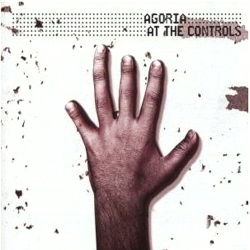

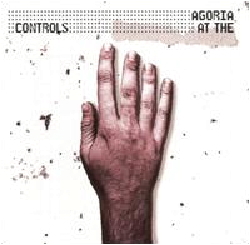
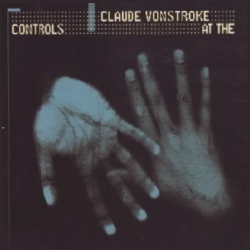
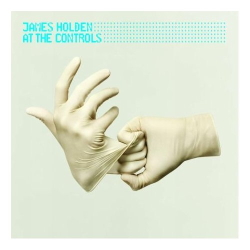

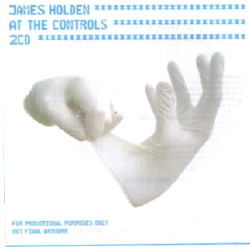
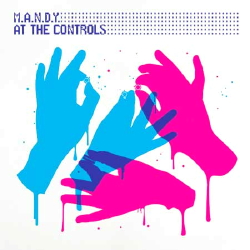

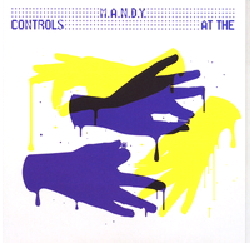
Two new mixes posted to the Music page
On 18, Oct 2009 | No Comments | In blog, music | By David Birnbaum
One disco, one techno. These are the first recordings I’ve made on my Urei 1620LE and I’m really happy with how big and smooth it sounds!
Incredible speaking piano
On 09, Oct 2009 | No Comments | In art, music, perception | By David Birnbaum
A composer named Peter Ablinger has created a jaw dropping sound art piece. He recorded a speech read by a child, analyzed the recording to extract its frequency content, and then mapped it to pitches on an acoustic player piano. My reaction was identical to the one described in the interview: what at first sounds like nonsense comes into perfect focus when you begin reading the text along to the sound. The flip from unintelligibility to clarity is a thrilling experience. Beautiful, beautiful work!
Organ-ize
On 03, Sep 2009 | One Comment | In cognition, language, music | By David Birnbaum
I was inspired to research the words “organ” and “organized” after I read a statement made by Merleau-Ponty scholar Lawrence Hass that “perceptions are organized (
Here’s a typical definition of organize:
- v. arrange in an orderly way
- v. to make into a whole with unified and coherent relationships (yourdictionary.com)
These definitions aren’t satisfying. What makes an organization orderly, unified, and coherent? The definition Hass implies is much more illuminating: to be organized is to be divided according to the sense organs of a perceiver. Now we’re getting somewhere!
But moving in a slightly different direction, what the hell are we doing playing a musical instrument called an “organ”? And what does all this mean for Edgard Varèse’s famous definition of music as “organized sound”?
organ
- n. from the Greek organon meaning “implement”, “musical instrument”, “organ of the body”, literally, “that with which one works” (Online Etymology Dictionary)
- n. an instrument or means, as of action or performance
(Dictionary.com)
Substituting “organ” in Varèse’s famous definition with these, the word “music” means:
- music is sound with which one works
- music is sound that is a means of action or performance
For the first time I understand what Varèse meant when he said music is “organized sound.” We use the word music to mean sound that is utilized by someone to work or perform. Nothing more, nothing less.
Automusic
On 13, Aug 2009 | No Comments | In music | By David Birnbaum
How goddamn incredible would it be to have music composed for you on the fly, reflecting your emotions?
Everyone’s ears have suffered the effects of repetitively-played canned music, be it in workplaces, hospital environments or during phone calls made to directory inquiries numbers. On this basis, the research team decided that it would be “very interesting to design and build an intelligent system able to generate music automatically, ensuring the correct degree of emotiveness (in order to manage the environment created) and originality (guaranteeing that the tunes composed are not repeated, and are original and endless).”
And on a related, melodious note, I recently discovered that people have been using auto-tuning software on everyday sounds and speech. Cool! Here’s an auto-tuned baby crying.
If babies could be made to always sound like this when they cry, would the birth rate go up? Would people be less motivated to help infants in trouble because the crying would be less irritating? Would the kid develop musical abilities unlike any in history?
Real time effects for daily living
On 15, Apr 2009 | No Comments | In music | By David Birnbaum
A breakthrough iPhone application called RjDj allows you to go about your daily business listening to the world through real-time audio effects. Similarities to drugs and to movie soundtracks are mentioned in the video, but this is much, much bigger and cooler than those. RjDj uses motion and sound sensors to layer digitally mapped feedback over everyday experience. It’s a step toward pre-processing all of the sensory stimuli flowing into your body so that they’re optimized for comfort, pleasure, and information density. I predict this is going to become one of the central uses of mobile computers, and RjDj suggests that it’s already on its way.
(via Althouse)
Music for the deaf and hard of hearing
On 13, Apr 2009 | No Comments | In art, music | By David Birnbaum
Beatport upgrade promises to "redefine your senses"
On 25, Dec 2008 | No Comments | In music | By David Birnbaum
Beatport, my favorite music shop, is getting an upgrade this January 21st. The promotional site uses the five Aristotelian senses as a marketing tool. So far, only two of the upgrades have been revealed, Hear and Taste. Some reactions and thoughts:
- Hear
- An upgraded preview player includes a volume slider and a playlist. The playlist is brilliant because it allows you to add up to 200 songs and then listen continuously, which I predict will cause me to come to the site a lot more often just to put on a long list of music and let my computer play while I do other things. I could see myself leaving my computer for a while, but then noticing that a track is really cool and coming over to buy it. The addition of a volume slider is a surprising. User tests must have found that this was a requested feature, but I hate having multiple gain controls for the same digital source. Everyone should know how to use their computer’s volume controller, why clutter the Beatport interface by adding another one?
- Taste
- New content finding and filtering tools have been dubbed an upgrade to “taste.” Kinda cute metaphor. Hard to judge how useful this will be until I try it. If the new tools bring me more music that is to my taste, it’s a win.
- Smell
- I can’t imagine the metaphorical sense in which Beatport will improve its smell. Allowing you to “sniff out” better music? Shipping Beatport merchandise that smells like crates of records and spilt beer? This blogger speculates that it could be some sort of green-angle thing, like, since you are downloading music instead of shipping it, there’s less air pollution. That would be lame!
- See
- This is almost certainly the addition of album artwork. Especially now that Traktor Pro can handle it, the lack of album art on Beatport is a major shortcoming. I don’t care what the artwork consists of, I just want a visual cue to accompany the verbal and auditory ones that create the idea of a piece of music in my mind.
- Touch
- Well, again I have no idea what they have in mind here. Maybe the user interface has been made snappier, which could make it metaphorically more responsive to the user’s touch. That would be nice.
Embodied music cognition
On 08, Oct 2008 | No Comments | In books, cognition, music, neuroscience | By David Birnbaum
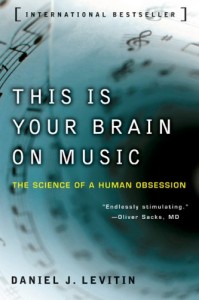 This is Your Brain on Music is a great introductory book on the neuroscience of music. Although I found it weighted a bit too much toward popular science for my liking, that was its stated purpose, and there was still plenty of good information in it.
This is Your Brain on Music is a great introductory book on the neuroscience of music. Although I found it weighted a bit too much toward popular science for my liking, that was its stated purpose, and there was still plenty of good information in it.
Here we have an explanation of musical timing as an analogy for a moving body:
Virtually every culture and civilization considers movement to be an integral part of music making and listening. Rhythm is what we dance to, sway our bodies to, and tap our feet to… It is no coincidence that making music requires the coordinated, rhythmic use of our bodies, and that energy be transmitted from body movements to a musical instrument. (57)
‘Tempo’ refers to the pace of a musical piece—how quickly or slowly it goes by. If you tap your foot or snap your fingers in time to a piece of music, the tempo of the piece will be directly related to how fast or slow you are tapping. If a song is a living, breathing entity, you might think of the tempo as its gait—the rate at which it walks by—or its pulse—the rate at which the heart of the song is beating. The word ‘beat’ indicates the basic unit of measurement in a musical piece; this is also called the ‘tactus’. Most often, this is the natural point at which you would tap your foot or clap your hands or snap your fingers. (59)
Levitin also delves into the possible evolutionary reasons for music, noting that music seems to always go with dance, and that the concept of the expert musical performer is very recent:
When we ask about the evolutionary basis for music, it does no good to think about Britney or Bach. We have to think about what music was like around fifty thousand years ago. The instruments recovered from archeological sites can help us understand what our ancestors used to make music, and what kinds of melodies they listened to. Cave paintings, paintings on stoneware, and other pictorial artifacts can tell us something about the role that music played in daily life. We can also study contemporary societies that have been cut off from civilization as we know it, groups of people who are living in hunter-gatherer lifestyles that have remained unchanged for thousands of years. One striking find is that in every society of which we’re aware, music and dance are inseparable.The arguments against music as an adaptation consider music only as disembodied sound, and moreover, as performed by an expert class for an audience. But it is only in the last five hundred years that music has become a spectator activity—the thought of a musical concert in which a class of “experts” performed for an appreciative audience was virtually unknown throughout our history as a species. And it has only been in the last hundred years or so that the ties between musical sound and human movement have been minimized. The embodied nature of of music, the indivisibility of movement and sound, the anthropologist John Blacking writes, characterizes music across cultures and across times. (257)
I agree. Even though we may use modern technology to exploit musical cognitive faculties for maximum effect, the idea that music/dance is a counter-evolutionary accident seems wrong to me.
You can find the website that accompanies the book at yourbrainonmusic.com.
Automatically sync your music to your body
On 01, Sep 2008 | No Comments | In interfaces, music | By David Birnbaum
That’s what Yamaha’s BODiBEAT promises to do. More specifically, it syncs the tempo of your music to your gait. It’s been released as a workout tool, but it’s also an interesting musical interface as such, and if it works it will no doubt find its way into electronic music performance very soon.
(via Engadget)
Expert performance on a DJ mixer
On 12, Aug 2008 | No Comments | In music | By David Birnbaum
Last weekend I had the privilege of seeing a few of my favorite electronic music DJs live. I took this closeup video of Collette working the faders and knobs on a DJ mixer, and I think it’s a great snippet of a virtuostic electronic music performance. It starts just after she’s begun to mix in a new track, and illustrates how control over the EQ and loudness of two very different songs can make for a compelling transition.
Moog smacks down Gibson in guitar-improvement-off
On 15, Jun 2008 | No Comments | In music | By David Birnbaum
I blogged Gibson’s pretentiously named “Robot Guitar” a while back. I haven’t used it yet, but this video makes me think its interaction design is questionable.
Donald Norman might break it down like this:
- Pull out the “tuning knob,” which looks like a standard gain control and doesn’t look like it’s supposed to be pulled. In fact, when the knobs on normal guitars are pulled in this way they come off, so most guitarists have learned to avoid pulling on knobs.
- Make sure you’re not touching the neck or the tuning keys! You know, those things that look like they were made for human fingers to touch and that are an essential part of the manual interface to all other string instruments? Forget that, and instead keep this knowledge in your head: hands off.
- Strum the guitar several times. While you do this, crouch over your guitar so you can see the LEDs on the front of the tuning knob, which faces the audience.
- After a few strums, the LEDs change color. Now you’re “ready to rock.”
Meanwhile, Moog has extended the creative capabilities of electric guitars with innovative, elegant technology that may actually deserve the title “world’s first,” though Moog is confident enough in their product that they don’t bother with that kind of marketing nonsense. By feeding some of the output signal back into the strings, the instrument allows precise control of the envelope of the sound. “Infinite sustain” as well as banjo-like damping are both made possible. Powerful stuff.
